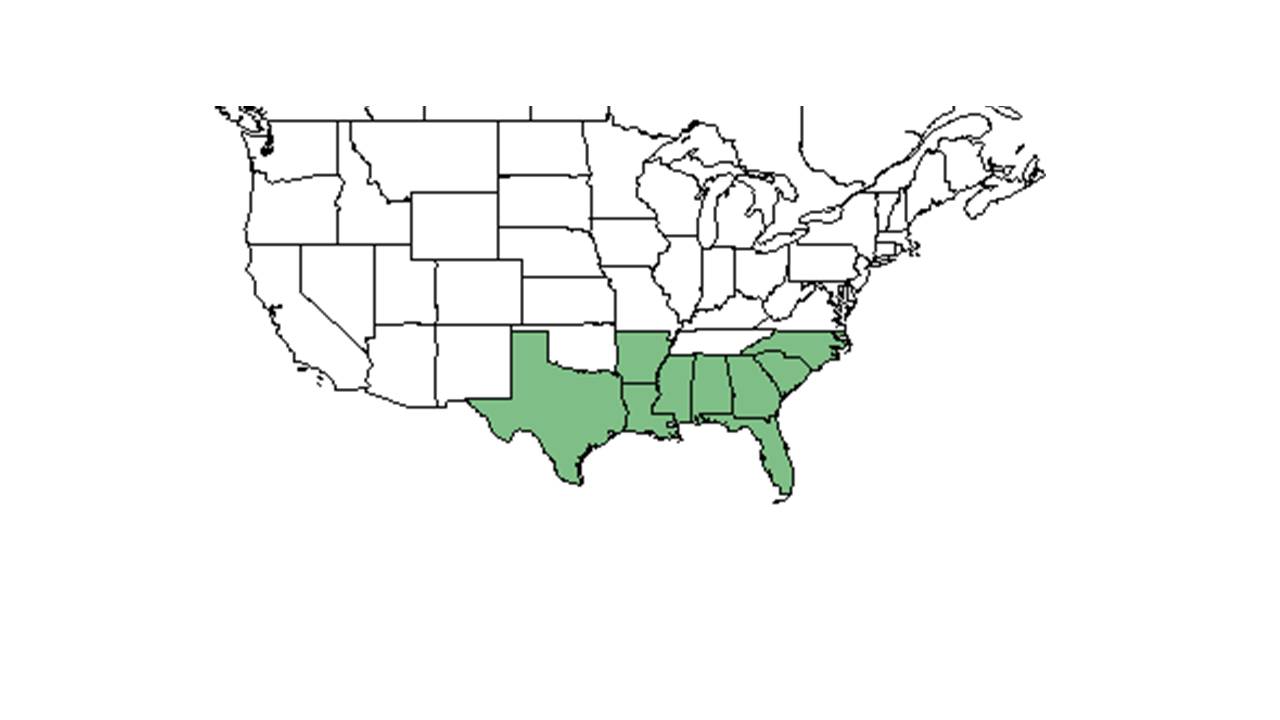Difference between revisions of "Crocanthemum carolinianum"
Krobertson (talk | contribs) |
|||
| Line 18: | Line 18: | ||
}} | }} | ||
| − | Common | + | Common names: Carolina frostweed; Carolina sunrose |
==Taxonomic notes== | ==Taxonomic notes== | ||
Synonym: ''Helianthemum carolinianum'' (Walter) Michaux | Synonym: ''Helianthemum carolinianum'' (Walter) Michaux | ||
Revision as of 18:43, 26 June 2018
| Crocanthemum carolinianum | |
|---|---|
Error creating thumbnail: Unable to save thumbnail to destination
| |
| Photo was taken by Gil Nelson | |
| Scientific classification | |
| Kingdom: | Plantae |
| Division: | Magnoliophyta - Flowering plants |
| Class: | Magnoliopsida – Dicotyledons |
| Order: | Violales |
| Family: | Cistaceae |
| Genus: | Crocanthemum |
| Species: | C. carolinianum |
| Binomial name | |
| Crocanthemum carolinianum (Walter) Michx. | |

| |
| Natural range of Crocanthemum carolinianum from USDA NRCS Plants Database. | |
Common names: Carolina frostweed; Carolina sunrose
Contents
Taxonomic notes
Synonym: Helianthemum carolinianum (Walter) Michaux
Description
Crocanthemum carolinianum is a perennial herbaceous species.
Generally, for the Crocanthemum genus, they are erect, heraceous or suffrutescent perennials with alternate, stellate-pubescent leaves. There are two types of flowers, chasmogamous and cleistogamous. Chasmogamous flowers are on the pedicels that elongate to usually more than 1 cm long with large showy, tallow petals; there are numerous stamens and large sepals. The cleistogamous flowers are on the pedicels are usually less than 3 mm long, where the petals are absent, the stamens are few and the sepals are smaller than those of the chasmogamous flowers. The sepals are in 2 whorls, the outer are narrower than the inner. The capsule is 3-locular.[1]
Specifically, for Crocanthemum carolinianum species, the roots have tuberous thickenings, the stems grow 1-3 dm tall, are pilose, arising from a basal rosettes of leaves. The leaves are widely elliptic to obovate, or nearly lanceolate, growing 2-5 cm long, and 0.7-2 cm wide, stellate pubescent on both surfaces, with longer trichomes above; basal leaves are often somewhat erose,usually larger than the stem leaves; the petioles grow 1-3 mm long. The cleistogamous flowers are absent. The chasmogamous flowers are solitary, are opposite a leaf (or appearing internodal). There are 6 sepals, the outer 3 linear, growing 5-10 mm long, are acute to acuminate, stellate pubescent; the petals growing 1.5-2 cm long. The capsules are globose to subglobose, growing 7-9 mm long. The seeds are reddish black in color, papillose, and growing 0.8-1 mm long.[1]
Distribution
Found from North Carolina south to Florida and west to Texas.
Ecology
Habitat
C. carolinianum can be found in longleaf pine-wiregrass savannas, as well as some disturbed areas, like mowed areas and fields.[2] It grows well in sunny, well drained habitats.[3]
Phenology
C. carolinianum has both chasmogamous flowers and cleistogamous flowers. The chasmogamous flowers have 5 petals and numerous stamen, while the cleistogamous flowers lack petals and have few stamen.[4] Flowering has been observed in February, March, and April.[2]
Fire ecology
This species occurs in habitat that burns frequently.[2]
Conservation and management
Cultivation and restoration
Photo Gallery
References and notes
- ↑ 1.0 1.1 Radford, Albert E., Harry E. Ahles, and C. Ritchie Bell. Manual of the Vascular Flora of the Carolinas. 1964, 1968. The University of North Carolina Press. 718-9. Print.
- ↑ 2.0 2.1 2.2 Florida State University Robert K. Godfrey Herbarium database. URL: http://herbarium.bio.fsu.edu. Last accessed: June 2014. Collectors: Robert K. Godfrey, Chris Cooksey, R. Komarek, Loran C. Anderson, and Richard R. Clinebell II. States and Counties: Florida: Leon. Georgia: Grady and Thomas.
- ↑ [[1]]Native Florida Wildflowers. Accessed: April 16, 2016
- ↑ [[2]]Native Plants of the Carolinas and Georgia. Accessed: April 16, 2016